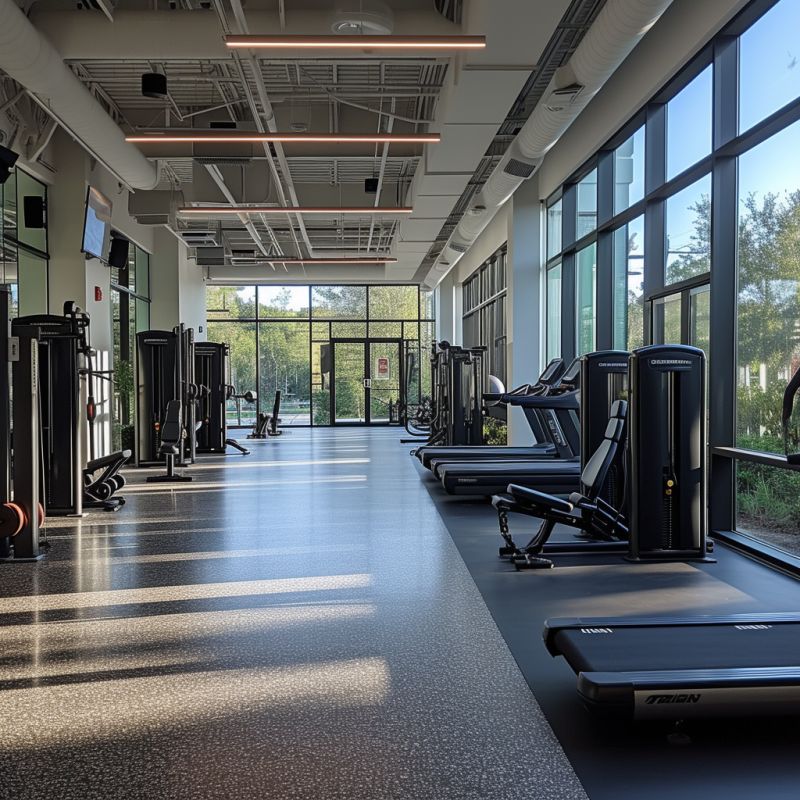When it comes to maintaining foot health and achieving peak performance, the choice of flooring is paramount, whether you’re working out at the gym or exercising at home. Proper flooring not only provides support and cushioning for the feet but also minimizes the risk of injury and enhances overall performance. In this blog post, we’ll explore the importance of choosing the best gym and home flooring for optimal foot health and performance, with insights from Applied Motion, specialists in podiatry catering specifically to athletes.

Introduction to Applied Motion: Podiatry Specialists for Athletes
Applied Motion is a renowned leader in biomechanical research and podiatry solutions, dedicated to optimizing performance and preventing injuries in athletes. With a team of expert podiatrists and biomechanical specialists, Applied Motion collaborates with athletes of all levels to provide tailored solutions for foot health and performance enhancement.
The Importance of Flooring in Foot Health and Performance
Flooring plays a crucial role in foot health and performance, as it directly impacts factors such as shock absorption, stability, and biomechanical alignment. The wrong type of flooring can lead to discomfort, fatigue, and even injury, especially during high-impact activities such as running, jumping, and weightlifting. By choosing the right flooring, athletes can optimize their training environment and minimize the risk of foot-related issues.
Factors to Consider When Choosing Gym Flooring
When selecting gym flooring, several factors should be taken into consideration, including:
Shock Absorption: Gym flooring should provide adequate shock absorption to cushion the feet and reduce impact forces during exercise.

Durability: The flooring material should be durable and able to withstand heavy use, ensuring long-term performance and safety.
Traction: Proper traction is essential for stability and balance during dynamic movements, helping to prevent slips and falls.
Cleanliness: Hygiene is critical in gym environments, so flooring should be easy to clean and maintain to minimize the risk of bacterial growth and odors.
Noise Reduction: Flooring with sound-absorbing properties can help reduce noise levels in the gym, creating a more comfortable and conducive training environment.
Choosing Home Flooring for Exercise Spaces
For individuals who prefer to work out at home, selecting the right flooring is equally important. When designing a home exercise space, consider the following factors:
Comfort: Opt for flooring materials that offer comfort and support, such as foam mats or rubber tiles, to cushion the feet and joints during exercise.

Versatility: Choose flooring that can accommodate a variety of exercises and activities, from yoga and Pilates to cardio and strength training.
Easy Installation: Look for flooring options that are easy to install and require minimal maintenance, allowing you to create a functional exercise space with minimal hassle.
Aesthetic Appeal: Select flooring that complements the overall design aesthetic of your home and enhances the visual appeal of your exercise space.
Conclusion: Enhancing Foot Health and Performance Through Proper Flooring

In conclusion, choosing the best gym and home flooring is essential for optimizing foot health and performance during exercise. By prioritizing factors such as shock absorption, durability, traction, cleanliness, and noise reduction, athletes can create a safe and supportive training environment that minimizes the risk of injury and maximizes performance. With the expertise of Applied Motion, podiatry specialists for athletes, individuals can make informed decisions about flooring choices that promote foot health and enhance overall athletic performance.
You might also like to view our other post like Integrating Architectural Consulting with Pest Control Solutions and Crafting an Effective Digital Marketing Campaign for an Architectural Design Company
